Author Archive
-
Creation of a mobile App without the Flash IDE (for all FlashDevelop lovers)
5th Oct 201127If you read Emanuele Feronato’s blog you’ll know that the title of this post is a play on one of his. He detailed in length the process you need to go through to create an iOS App using the Flash IDE. However you don’t actually need the Flash IDE at all. If anything the process is faster and less painful using the completely free FlashDevelop.
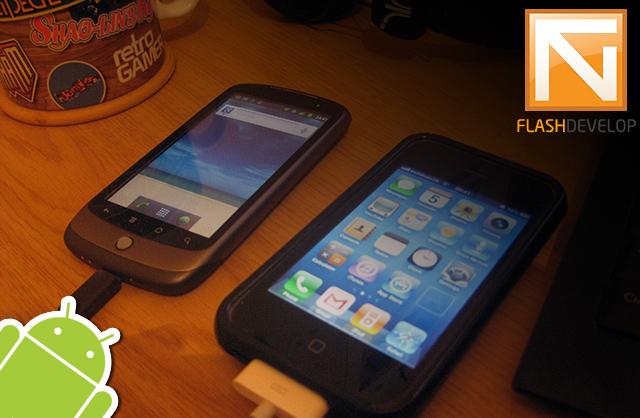
The main reason I’m writing about this however is that with AIR3 officially released, I was keen to test the performance of Flixel code running on mobile. And I was shocked to say the least. The last time I tried creating a game for mobile using Flash was back when CS5.5 was still only in pre-release. The performance then was hideous, easily un-usable for any serious (or even semi-serious) game.
That was over a year ago, and a lot has changed. AIR3 and Flash Player 11 were officially released last night, and although they are lacking Stage3D on mobile for the time being, apparently they still bought significant speed boosts to the table. Time to put that to test with a video of results at the end.
-
Flod 3.0 and FlodXM Source Released
29th Sep 2011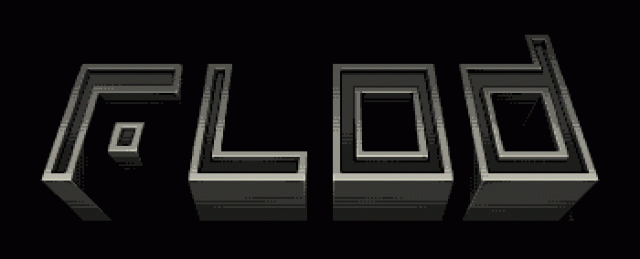
We’re pleased to announce that Christian has asked us to release the full source packages for FlodXM and Flod 3. So we created 2 new github projects and spent a lot of time collecting, sorting and populating them! Our Flod page on this site has also been drastically updated to reflect all of the changes and provide clear download links and examples.
FlodXM was previously only available as a SWF to test XM file playback quality. Thank you to everyone who did this and submitted broken modules. With the source now available you’re free to replay XMs in your own games and demos, as well as fork the project and build your own players or fix missing effects.
Flod 3 was Christians attempt to merge all of the various Flod classes together. Previously Flod had been dedicated to Amiga mod replay (so common Soundtracker and ProTracker files) where-as the FlodEx package was for the more unique formats like SidMon and Future Composer. Flod 3 brings all of those together into one set of classes, making life for developers much easier and cleaner! It’s only a Release Candidate however, so we’ve included it along-side the packages on which it is built.
Finally we’ve also released Flym which is an Atari ST YM music replay library. YM files traditionally come from Atari ST emulators, and are raw Yamaha soundchip register dumps. There are hundreds of them available online and while this is a very niche replay class, I for one appreciate the fact it exists! 🙂
So head on over to the new Flod page to snag the downloads, and play your hearts out!
-
Flash Game Dev Tip #13 – Building a retro platform game in Flixel, Part 2
21st Sep 2011
Tip 13: Building a retro platform game in Flixel, Part 2
Note: This tutorial was originally written for .net magazine. I’m now allowed to publish it here, so read on and enjoy! Part 1 is also available.
In the previous issue we took the open-source Flash game framework Flixel (www.flixel.org), and used it to create an 8-bit styled retro platform game. By the end of part 1 the player could run and jump around the scrolling level, collecting stars on the way. We covered a lot of ground and if possible you are urged to check out issue 218 and the associated downloads before diving into this part.
With the basics of the game in place it’s time to spice things up. We will add a title page to present the game, baddies to provide obstructions to the player, and mix it all up with suitably retro sounding chip music and sound effects. Please download the tutorial files and look through the source alongside reading the article, because for the sake of space not all code can be included in print.
Sprinkling a little Nutmeg
As with most things in life, first impressions are everything. If you don’t captivate the player within a few moments of your game, you are likely to lose them. This is especially true with games that are free to play online. As the choice is so wide you really need a compelling reason for them to stick around. A great title page can be a good way to achieve this. It should show them the name of your game, perhaps offer-up some of the key characters or themes, and be backed up with a short piece of music that fits the mood you’re trying to set.
Our game is called Nutmeg (a play on the title of this magazine) and our title page features the main character in a suitably jovial but dynamic pose, and the game logo.
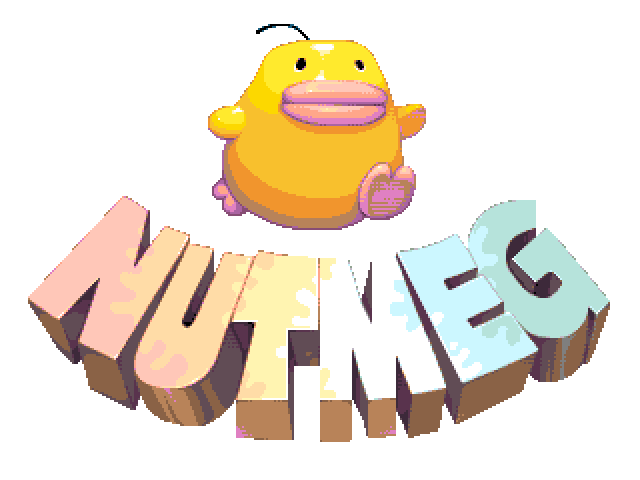
Nutmeg is the title of our game. Our chirpy chick character defining the feeling we want to convey before the game has even started.
To really capture the feel of retro console games our title page will feature an attract mode. This term is taken from arcade machines that used to run short sequences of the game, to attract you to part with your 10p pieces. Our title page has been designed with a transparent background and aliasing so that it can be overlaid onto the game level which will scroll horizontally back and forth.
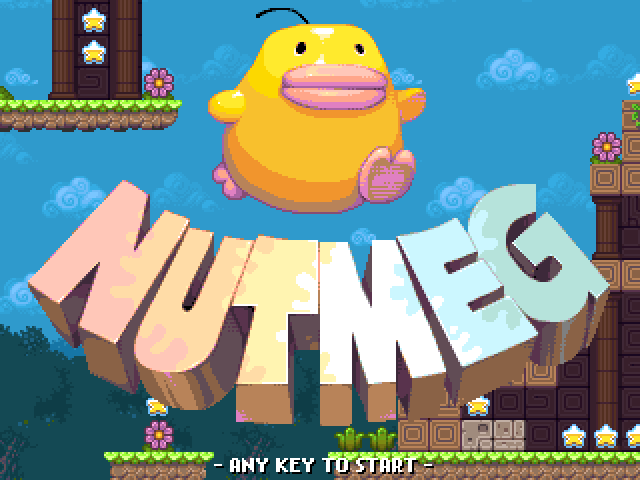
Our assembled title page. The background scrolls horizontally, showing off the level behind the logo.
To display the logo in an interesting way we’ll use one of the SpecialFX plugins from the Flixel Power Tools. First we activate the Special FX plugin and create an instance of it:
-
Flash Game Dev Tip #12 – Building a retro platform game in Flixel, Part 1
15th Sep 2011
Tip 12: Building a retro platform game in Flixel, Part 1
Note: This tutorial was originally written for .net magazine. I’m now allowed to publish it here, so read on and enjoy! Part 2 will follow next week.
Retro style games are becoming more popular than ever online. Commonly referred to as “8-bit” these games have pixel-art graphics and “chip tune” music that apes the consoles of old, but often have surprisingly innovative gameplay mechanics. And Flash has turned out to be the perfect tool for creating them, as hit titles like Canabalt and Fathom demonstrate.
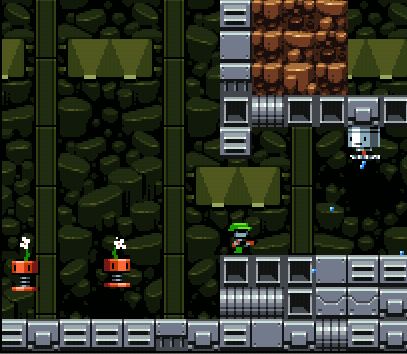
Fathom was one of the first games built with Flixel and is a good example of what it can do.
This may seem at odds with a technology known for its vector graphics and timeline animation. But under the hood Flash is perfectly capable of pushing around large volumes of pixels which is exactly what is required. Flixel is a game framework born from a desire to create 8-bit style games. But it has evolved into a powerful way to rapidly create games in Flash. With a strong community and plug-ins available it’s the perfect choice to create our game with. In this two part series we’ll explore how Flixel works and build a retro-styled platform game in the process.
Download the tutorial files and look through the source code alongside reading the article, because for the sake of space not all of it can be covered here and we’ve got a lot of ground to cover.
-
FlodXM – Please help test this AS3 XM player
15th Sep 2011Updated: 29th September – source code now released!
Christian Corti the developer of Flod, the most accurate SoundTracker replay library for AS3 is back. This time with FlodXM. As the title implies this is a FastTracker 2 (XM format) player written in pure AS3. Fast Tracker and later FT2 was created by legendary demosceners Mr. H and Vogue of Triton (now Starbreeze Studios). XM format music was popular in the 90s and used in many commercial games including Unreal and Deus Ex, as well as widely in the demoscene.
FlodXm brings this power to AS3, and while it’s nothing short of incredible we want to make it even better!
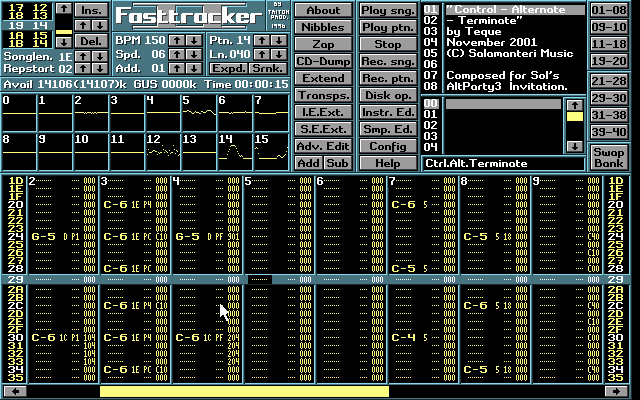
We really need your help to test it. Please throw as many XM files at it as you can – the more esoteric and obscure the better! Christian really wants to support all of the various effects FastTracker has, including those created as a result of bugs in the original tracker code. So the more files we playback the better. FlodXM is embedded below after the jump, along with a File Upload form.
Hire Us
All about Photon Storm and our
HTML5 game development services
Recent Posts
OurGames
Filter our Content
- ActionScript3
- Art
- Cool Links
- Demoscene
- Flash Game Dev Tips
- Game Development
- Gaming
- Geek Shopping
- HTML5
- In the Media
- Phaser
- Phaser 3
- Projects
Brain Food



